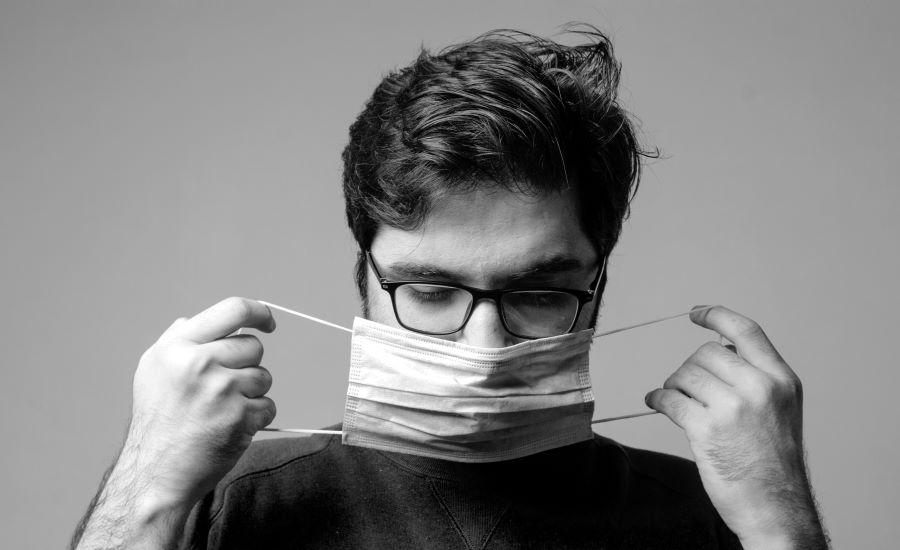The primary objective of a hospital’s HVAC system is to create an environment where patients are at a reduced risk for infection during their stay. Airborne transmission of life threatening particles including molds, bacteria, viruses, and fungi can be introduced into the environment not only by the hospital’s other sick patients, but also by the built environment itself.
IAQ and infection transmission mitigation gained recognition in the early 1990s with the rise of tuberculosis (TB) incidents and sensitivity of bone marrow transplant patients to infection, and it has resulted in the ongoing evolution of guidelines, recommendations, and standards for the design, construction, and operation of hospital isolation rooms.
Over the last 20 years, ASHRAE, the Centers for Disease Control (CDC), and the Facility Guidelines Institute (FGI) have made recommendations for health care HVAC systems design. Currently, the 2010 Edition of the FGI Guidelines (www.fgiguidelines.org/guidelines2010.php) sets the standard for many state and federal codes, with its incorporation of ANSI/ASHRAE/ASHE Standard 170-2008: Ventilation of Health Care Facilities (www.ashrae.org), or the mandatory minimum requirements for hospital HVAC design.
While isolation rooms account for as little as 10% of a typical hospital program area, they demand specialized patient care and therefore specialized design, construction, operation, and maintenance as well.
DESIGN
Isolation rooms can be classified as either protective environment (PE) rooms for patients suffering from weakened immune systems who require protection against infectious airborne agents, or airborne infection isolation (AII) rooms for patients with an airborne-communicable disease who require protection because of their potential to infect others. While these rooms have many design similarities, including the use of the high-efficiency particulate air (HEPA) filter, which removes more than 99.97% of particles 0.3µm micron-sized (the most penetrating particle size) and larger at a specified flow rate of air, they differ in a number of critical ways.
PE rooms. According to ASHRAE, a PE room demonstrates, by continuous or periodic testing, outward airflow with sustained positive air pressure with respect to all six surfaces (walls, floor, and ceiling), including the outside wall.
The PE room will have specific ventilation design features, including HEPA-filtered supply air delivered from non-aspirating air diffusers placed over the bed with return air registers placed low on the wall near the room entrance, providing a general airflow pattern from the patient toward the door. Recirculation HEPA filters can also be employed to increase the equivalent room air exchanges, while constant volume airflow is required for consistent ventilation in the PE room.
PE rooms feature two control design strategies that are generally acceptable under hospital codes:
- Constant volume with fixed volumetric differential between supply and return/exhaust
- Volumetric control (tracking) with direct pressure reset
These airflow design specifications protect the patient from common environmental airborne infectious microbes, with special ventilation areas designed to provide directed airflow.
AII rooms. Per ASHRAE’s HVAC Design Manual For Hospitals and Clinics, the HVAC system in AII rooms is one of the multiple levels of infection control designed to contain patient-generated infectious microbials within the room, preventing the spread of infection to other areas of the hospital.
These rooms provide a volume within which airborne particles are contained, diluted, and directed outside. AII rooms have two major ventilation design criteria:
- Negative pressure relative to all adjoining spaces (0.01 in. w.g.)
- An air distribution pattern within the room that is favorable to airborne infection control
AII rooms require numerous ach: more than 12 ach for new construction, under negative pressure, such that the direction of the airflow is from the outside adjacent space (e.g., the corridor) into the room. The air in an AII room is strongly recommended to be exhausted directly to the outside, but where this is not feasible in an existing facility, it may be recirculated if the return air is filtered through a HEPA filter. Supplemental recirculating devices using HEPA filters are permitted in the patient room to increase the equivalent room air exchanges; however, outdoor air changes are still required.
AII rooms that are retrofitted from standard patient rooms where it is impractical to exhaust directly to the outside may be recirculated with air from the AII room, provided that the air first passes through a HEPA filter. This air may mix with exhaust air that serves non-AII spaces prior to being discharged directly outdoors.
The supply and exhaust air for AII rooms must employ a constant volume system, while AII rooms require air pressure monitoring periodically, preferably daily, with audible manometers or smoke tubes at the door (existing AII rooms), or with a permanently installed visual monitoring mechanism.
The use of personal respiratory protection is also indicated in the CDC’s Guidelines for Environmental Infection Control in Health-Care Facilities (www.cdc.gov/mmwr/preview/mmwrhtml/rr5210a1.htm), for persons entering these rooms when caring for TB or smallpox patients and for staff who lack immunity to airborne viral diseases such as measles or varicella zoster virus (VZV) infection.
PE and AII rooms. When a design criterion requires side-by-side PE and AII rooms, an anteroom should be provided. Rooms with reversible airflow provisions for the purpose of switching between PE and AII functions are no longer acceptable. In PE rooms with ante-rooms, ASHRAE’s HVAC Design Manual For Hospitals and Clinics requires a fixed constant volume offset to be maintained in the anteroom. This offset makes the anteroom negative with respect to the PE isolation room and slightly positive with respect to the corridor.
Where an anteroom is present between the AII room and the corridor, the AII room may be negatively or positively pressurized to the anteroom. However, if the AII room is positively pressurized to the anteroom, the anteroom must be negatively pressurized to the corridor.
CONSTRUCTION
As PE and AII rooms are designed with meticulous care, the construction, renovation, remediation, repair, and demolition of these rooms should be no exception.
An infection control risk assessment (ICRA) plan should be developed to define the scope of construction activity and the need for any barrier measures, including debris removal, utility shutdowns, contractor access, and patient movement to minimize exposure to the hospital’s patients. The ICRA is best led by a health care facility’s infection control group, who should ideally be included in early planning and design review meetings as well as construction pre-bid meetings to help identify and resolve areas of concern early on, implementing infection-control measures before construction begins.
The infection control staff should establish a multi-disciplinary team to coordinate the demolition, construction, and renovation project and consider proactive, preventative measures from the beginning, helping to educate both the construction team and health care staff on immuno-compromised patient care, regarding the airborne infection risks associated with these projects.
Per the CDC’s Guidelines for Environmental Infection Control in Health-Care Facilities, other construction best practices for contractors and facilities personnel include:
- Create and maintain negative air pressure in work zones adjacent to patient-care areas and ensure that required engineering controls are maintained.
- Monitor negative airflow inside rigid barriers.
- For major repairs in patient-care areas that include the removal of ceiling tiles and the disruption of space above the false ceiling, use plastic sheets or prefabricated plastic units to contain dust; use a negative pressure system within this enclosure to remove dust and either pass through an industrial-grade, portable HEPA filter capable of filtration rates of 300 to 800 ft, 3/min, or exhaust air.
- If air supply systems to high-risk areas (i.e., PE rooms) are not optimal, use portable, in-dustrial-grade HEPA filters on a temporary basis until rooms with optimal air-handling systems become available.
O&M
Like any room in a hospital, the design and construction of PE and AII rooms can only lay the groundwork, while proper O&M make the robust framework a reality. There are a number of best practices to ensure that proper care is taken to allow PE and AII rooms to function as designed, safeguarding patients and the hospital from unwanted airborne agents.
Filtration system efficiency is dependent on the loading of the filters over time that may create a pressure drop unless compensated by stronger and more efficient fans so that airflow is maintained. When HEPA filters are used in infection control applications, it is imperative to have a meticulous maintenance program in place. For optimal HEPA filter performance, it is critical that the filter be:
- Installed in equipment that seals the filter in place in order to prevent contaminated air from bypassing the filter.
- Tested on site when they are first installed and every six months thereafter to confirm they are operating at their design efficiency.
- Monitored, with monometers or other pressure indicating devices, on a regular basis and replaced in accordance with the manufacturer’s recommendations and standard preventative maintenance practices. Gaps in and around filter banks and heavy soil and debris upstream of poorly maintained filters have been implicated in health care-associated outbreaks of Aspergillosis, especially during times of nearby construction.
- Used in the exhaust airstream of AII rooms requiring bag-in/bag-out procedures to minimize risk of exposure of the maintenance personnel to the infectious material.
In order to extend the life of the HEPA filter and avoid costly ongoing replacement, it is strongly recommended to provide a roughing pre-filter prior to the HEPA filter. Studies indicate that a low-efficiency pre-filter may extend the life of the HEPA filter by as much as 25%, while adding higher efficiency intermediate filters such as a MERV 14 (95% by ASHRAE 52.1 dust spot test) filter can extend the life of the HEPA filter by as much as 900%.1 This concept, called “progressive filtration,” allows HEPA filters in special care areas to be used for 10 years or more. HEPA filter efficiency is monitored with dioctylphthalate (DOP) particle tests using particles that are 0.3µm in diameter.
Other crucial ongoing operations include:
- Developing and implementing a maintenance schedule for ACH, pressure differentials, and filtration efficiencies by using facility-specific data as part of the multi-disciplinary risk assessment. Take into account the age and reliability of the system.
- Coordinating HVAC system maintenance with infection-control staff, relocating immunocompromised patients as necessary.
- Specifying back-up emergency power and air-handling and pressurization systems to maintain filtration, constant ACH and pressure differentials in PE and AII rooms in case of an emergency.
- Consideration must be given to the provision of redundant fan systems as well as redundant HEPA filter banks to accommodate periodic maintenance of equipment without loss of service to these critical areas.
The National Institute for Occupational Safety and Health (NIOSH) recommends a smoke-tube verification of directional airflow as a qualitative calibration check of differential pressures. Where a pressure monitoring system is installed, it is recommended that quantitative calibration be performed at some interval to ensure that the system is accurately monitoring pressure.
Additionally, some hospitals do regular air sampling of their PE and AII rooms. When remediation is required following the air sampling, UV germicidal irradiation (UVGI) can be used. Employed increasingly in microbiocidal HVAC applications as of late, UVGI lights destroy airbone microorganisms by exposing them to direct UV lights, in the wavelength of 200 to 270 nanometers. Placed at the ceiling or in the ductwork to sterilize the area, UVGI lights are often only used and accepted by codes as a supplemental protection to HEPA filtration systems because they are less effective when not adequately maintained and when relative humidity is high.
CONCLUSION
From design to construction and through operations, the treatment of isolation rooms is almost as specialized as the critical patient care itself. But, through the use of today’s guidelines and standards, the primary objective of a hospital’s HVAC design can be achieved to create an environment free of infectious airborne particles, minimizing risk to all patients. ES
WORKS CITED
1. HVAC Design for Healthcare Facilities, Continuing Education and Devel-opment, Inc., Stony Point, NY, (www.cedengineering.com/upload/HVAC%20Design%20for%20Healthcare%20Facilities.pdf).









